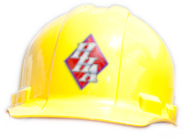The air in your home can be even nastier than the air outside.
source credit: Deposit Photos
Just like bacteria can hide in plain sight on your kitchen counters, pollutants hide in the air. And the air in your home can be even more nasty than the air outside, says Kari Nadeau, a professor at Stanford University who specializes in allergies and asthma. That’s especially true in the winter, when people keep their windows and doors closed to trap heat inside. With nowhere else to go, pollutants often linger indoors. You can clean the air in your home to a certain extent with air purifiers—experts prefer the more accurate term, “air cleaners”—which suck janky stuff like allergens and (some carcinogens) out of the air. But they also have limitations. Here's what you need to know before investing in one.
Who benefits from air purifiers?
Pretty much everyone, Nadeau says, but especially the at-risk crowd. That includes people with allergies and asthma; people who live near a highway; people who have secondhand smoke in their home (but still, air cleaners don’t eliminate the health risks); and young kids and old folks, who are at a greater risk of developing asthma.
But yes, also the average person who meets none of the above criteria. “We know that acutely and chronically, pollution is bad for our lungs,” Nadeau says. In the long term, breathing in dirty air can increase your risk of asthma, cause chronic lung problems, make you more susceptible to viral infections, and make it harder for your body to fight infection, she explains. In the short term, exposure to pollutants can cause headaches, dizziness, fatigue, and eye, nose, and throat irritation.
What are the major sources of indoor air pollution?
Not just cigarettes. Seemingly harmless everyday activities also taint the air—cooking, cleaning, lighting candles, you name it. Wood-burning fireplaces emit carbon monoxide, nitrogen oxides, and other particles invisible to the naked eye. Paraffin-based candles release cancer-causing toxins like benzene and soot. (Sorry, Yankee lovers.) Even pollutants from air fresheners can react with ozone and form compounds like formaldehyde. (In one test commissioned by the Environmental Working Group, Febreze air fresheners released 89 air contaminants.)
Throw indoor smoking into the mix, and you’re really asking for it: Tobacco smoke contains at least 70 carcinogens like benzene, formaldehyde, and arsenic. E-cigs do less damage, partly because you don’t light them up and they don’t burn between puffs like traditional cigarettes do. That means e-cigs pump fewer combustion products like carbon monoxide and nitrogen oxides into the air. In fact, traditional cigs emit 10 times more nicotine than e-cigs, according to a recent study.
How do air purifiers work?
Air purifiers clear out a lot of the gunk hanging around by trapping allergens and other pollutants in a filter. “It’s better than the lint filter in your dryer,” Nadeau says. The best air purifiers have a high-efficiency particulate air (HEPA) filter, which removes 99.97 percent of particles 0.3 microns (μm) or larger. (The average human head hair measures about 70 μm in diameter.) That includes common allergens from dust, pet dander, pollen, and mold, which are small enough to get trapped in your lungs, says James Sublett, a Kentucky-based allergist and the past president of the American College of Allergy, Asthma, and Immunology.
“HEPAs are considered the most efficient filters—nothing is rated higher,” Sublett says. That being said, they can only do so much: They only filter the air that goes through them. And even HEPA filters fail to catch particles smaller than 0.3 μm, like chemicals, gases, cigarette smoke, and fumes. That’s why it’s still a hard no to smoking indoors. If you want to filter the air as well as zap bad smells, look for an air purifier with a deep-bed activated carbon filter, which removes odors, he adds.
How can you maximize the benefits?
Most air purifiers are equipped for a certain number of square feet, Sublett says, so they work best when they’re placed in a room of that size. Many allergens settle into carpet, so you want to avoid placing your air purifier on a carpeted floor since it can stir those particles back into the air. “Air cleaners tend to be more efficient at pulling things out of the air at table height,” he says. Make sure you change the filter as often as recommended. Look out for shoddy descriptions like “HEPA-type filter”—those don’t exist, Sublett says. They’re either HEPA filters, or they’re not.
Is it worth the investment?
Air purifiers vary in price, anywhere from around $40 to $1,500. Looking for a cheaper option? If your home has a heating, ventilation, and air conditioning (HVAC) system, popping a high-efficiency filter in there can help clean the air throughout your home, rather than in the single room with a stand-alone filter.
“You would have to have an air cleaner in every room to get the same benefit as whole-house filtration,” Sublett says. He recommends installing an air filter in your HVAC system and changing them every three months or so. For people in the at-risk group, he suggests using the whole-house filter as well as an air purifier in the bedroom.
As always, prevention beats damage control. Try to avoid fireplaces, candles, air fresheners, and aerosol sprays, and be realistic about your purifier’s capabilities. “Avoidance is really important,” Sublett says. “Air filters are just one piece of the puzzle.”
Harbin Heating & Air can help you with an Air Scrubber, contact us for more information.
source credit: https://bit.ly/3du1PjX


